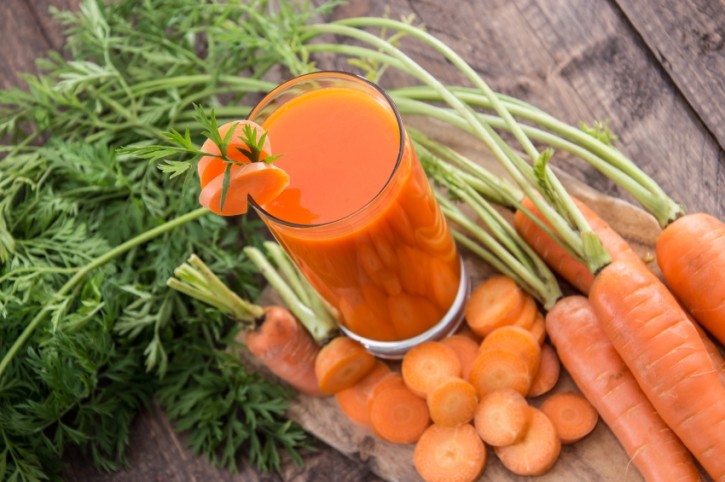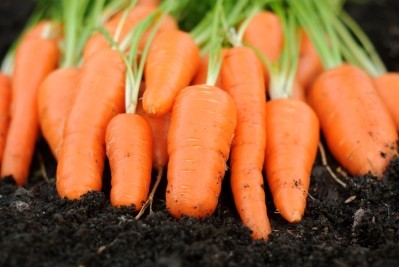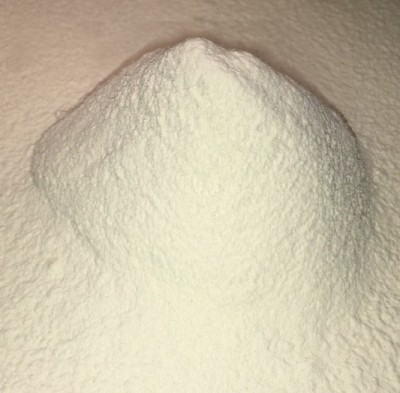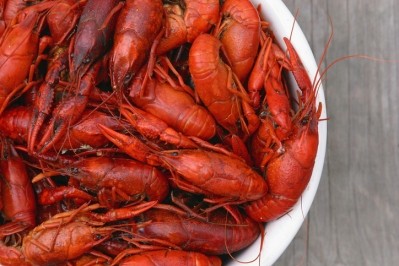Pulp fiction?
Orange crush: Carrot waste finding fibre future

KaroPro 1-26, derived from carrot juice production waste, can bind 26 times its weight in water, a level reached after four years of research and development that producer FoodSolutionsTeam said has found the optimum particle size for water retention.
The carrot pulp product’s sustainability credentials are a major selling point of the product, given that the ingredient comes from a side stream that was previously lost to human consumption, Erik Linke, managing director of FoodSolutionsTeam told FoodNavigator.
Linke said he does not see any possibility for higher water binding capacity in future, as tests commissioned by his company found that reducing particle size beyond their current levels – aiming to increase surface area and thus absorption – was unsuccessful.
The juice is extracted using only natural processes in accordance with the EU flavouring Directive, Linke said, but as they cannot be patented he did not want to reveal detail of the procedure.
The KaroPro 1-26 food ingredient is sold at a price of between €4.50 and €5 per kg.
The company will attend the Food Ingredients Europe (FIE) trade fair in Paris at the beginning of December seeking business for the initiative.
Beating waste to a pulp
Linke said the two most promising potential applications for the ingredient were in bakery and meat products, especially in countries where consumers are used to cheaper products with lower meat content.
“We see potential in meat markets where water has to be bound [to replace meat], or texture to be given,” he said.
As KaroPro 1-26 is derived from the edible part of the carrot, Linke said, food producers will also be able to extend shelf life by harnessing its moisture.
Being able to present a final product as having been created using sustainably sourced ingredients is perhaps the product’s most important attribute for potential buyers, Linke said.
“A lot of companies have sustainability written in their mission statements, and yet they use ingredients where there’s a lot of waste.
“I have seen manufacturers investigating side streams more closely in the past four years – particularly because consumers are now ready to reward companies seen to be using food in the most sustainable way.”
Other streams
KaroPro 1-26 is FoodSolutionsTeam’s second waste stream ingredient, following its LeinPro binding product.
LeinPro is drawn from the presscakes of the organic linseed production process. Its recommended applications include cold sauces, where it can be used in place of texturizing agents such as mayonnaise.
The company is also planning to develop further products taken from side streams, including cabbage, beetroot and certain types of oil. These projects will depend on the success of KaroPro 1-26 and LeinPro, Linke said.
Waste streams have previously been fertile areas from which to source ingredients. In February this year NutraIngredients reported on EU-funded project APROPOS’ development of protein supplements from fish discards and rapeseed, while in 2013 Leahy Orchards’ subsidiary AppleActive launched a joint-health ingredient created from apple peels.
Greek researcher Dr Charis Galanakis in 2009 co-authored a study whose findings suggested fibre obtained from the waste of olive mills could mimic the effects of fat, and even improve its cooking properties.
In July 2015 he published Food Waste Recovery: Processing Technologies and Industrial Techniques, a guide for scientists and researchers that examined the recycling of food waste.

















